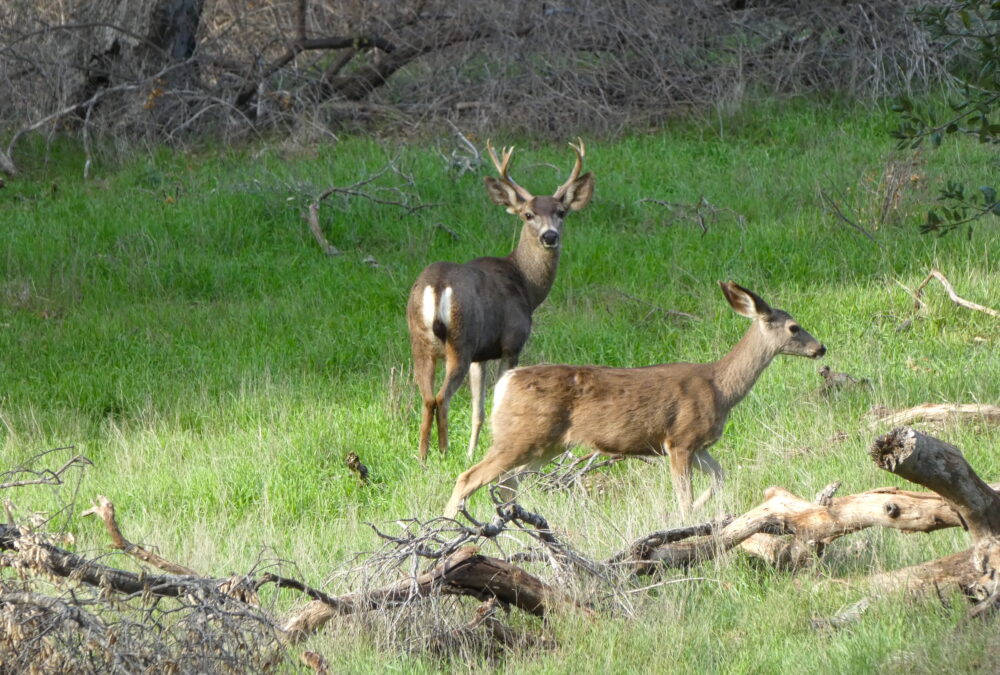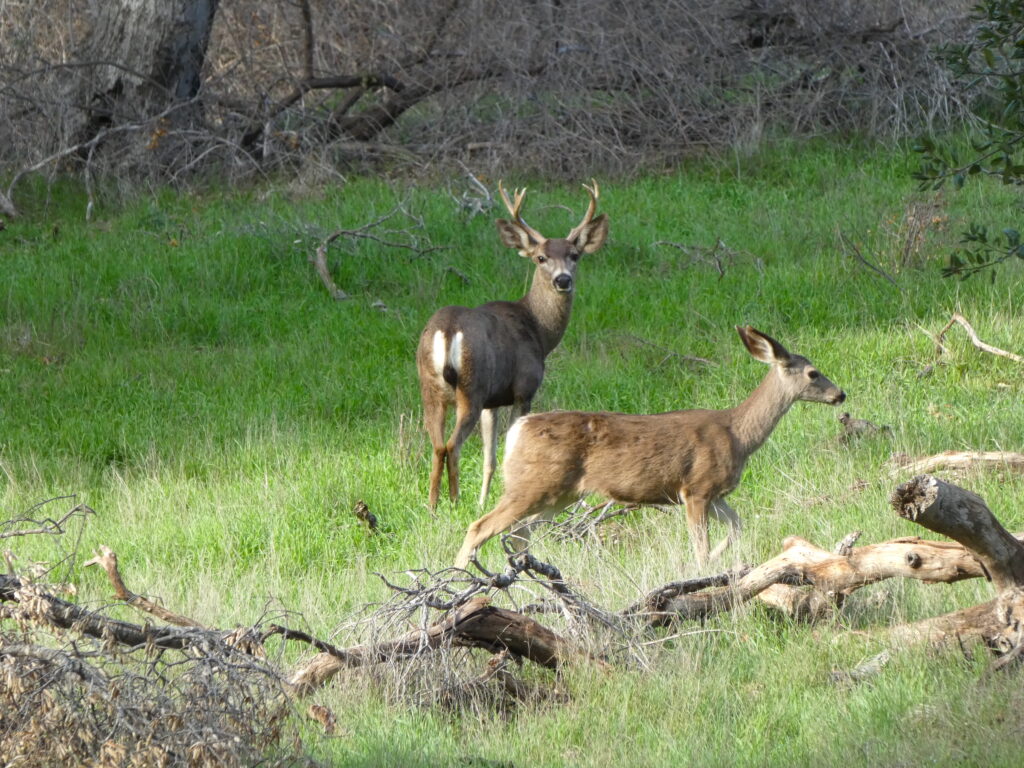
In other parts of the world, nature hibernates. In the Santa Monica Mountains, winter is one of the busiest times of the year. Mating and nesting is already underway for a number of key species. Here are some wild neighbors to keep an eye on.
The local mule deer population is taking advantage of winter rain and the first new green food in months. They finished their dramatic mating competition in early winter and have regrouped peaceful family herds. The males will soon shed their antlers and begin the process of growing new and bigger ones. The females have a long gestation period, around seven months. They are seeking the most nutritious food they can find to sustain pregnancy.
Mule deer are browsers, not grazers. They have a taste for garden plants like roses, and can show up in the garden in spring in pursuit of tender greenery to eat, but this year’s rain means more sources of food in the wild for them. The biggest hazard for these wild neighbors is getting struck by a speeding vehicle while crossing a road.
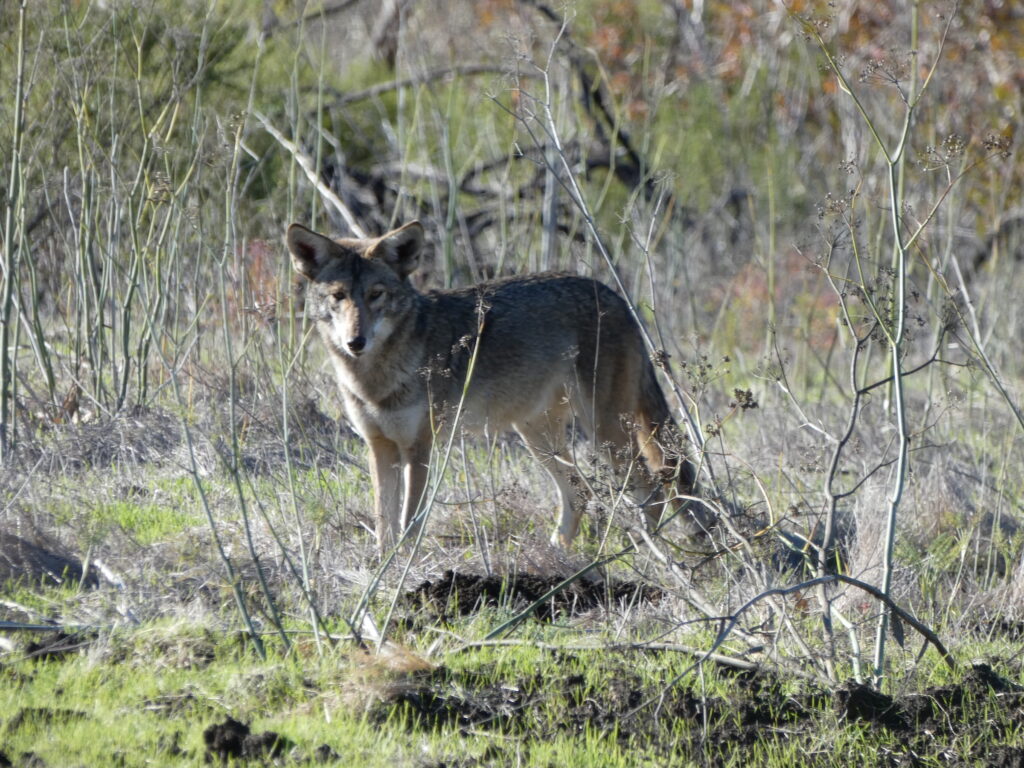
Coyotes are a year-round presence in the Santa Monica Mountains, but they may be more visible in late winter. Breeding season begins in January and peaks between late February and early March. Coyotes are often more active during the day at this time, looking for mates, or engaged in courtship, which includes elaborate games and mock fighting.
Pairs are often together for years, sometimes bonding for life. Gestation takes between 58 to 63 days. Once the pups are born, the coyote parents and any family helpers like older siblings or old aunties share hunting and puppy-sitting duties.
Although they are powerful diggers, coyotes don’t dig dens for themselves. They prefer to use other animals’ abandoned earthworks, small caves or rock shelters, or deep brush.
Coyotes live in small family groups. Young animals may travel a considerable distance to find a mate and start a new family. Like deer, they are vulnerable to vehicle strikes. They are also at high risk from rodenticide poisoning, since their main source of food includes gophers, mice, wood rats and ground squirrels.
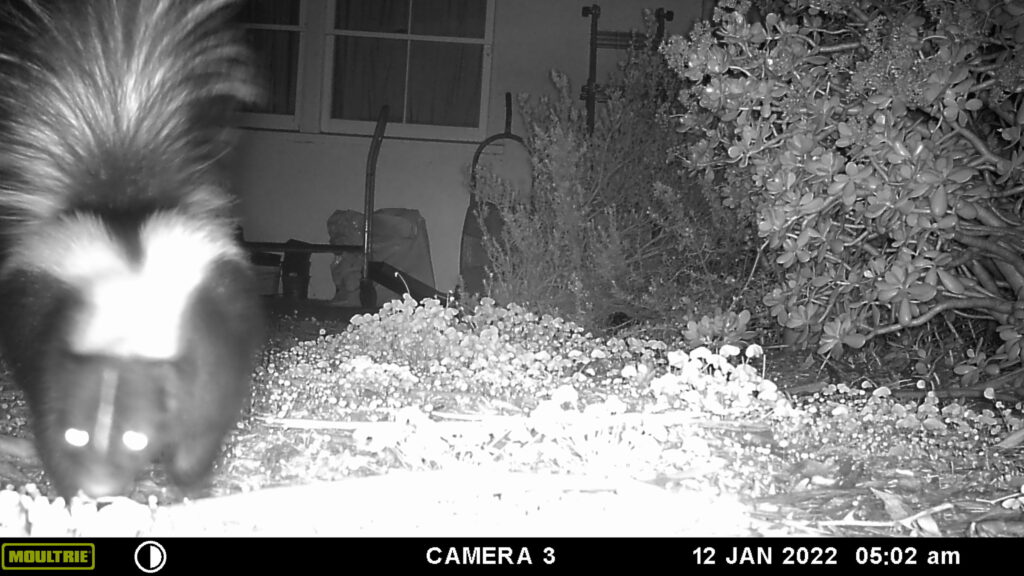
Love is in the air for skunks as well. Skunk mating season begins in January, peaks in February just in time for Valentine’s Day, and runs through March. Male skunks can travel miles in search of a mate. Unfortunately, these gentle but short-sighted animals are frequent victims of vehicle strikes.
Courtship can be an odiferous process. Females will spray a potential suitor who isn’t up to her standards. Kits are born about nine weeks after mating, but it takes about two to three months for young skunks to learn the skills they need to survive on their own outside of the den. Mom and kits often stay together until autumn, when the young skunks disperse.
The mother skunk raises her young on her own. She carefully prepares a den, lining it with grass. This is the time to close up potential skunk dens under the house or garden shed, before skunk moms move in and give birth.
Healthy skunks are most active after the sun goes down and before dawn. Keeping dogs in at night this time of year can help prevent smelly encounters. Skunks warn potential predators with a foot-stamping dance before releasing their terrible biological weapon, but dogs aren’t good at getting the message. When confronted by a skunk, moving quietly and quickly away will usually prevent any misunderstandings.
Skunks love chicken eggs and honey bees, which can be a problem, but they also eat a host of garden pests, including bugs of all kinds, grubs, snails and slugs, and even mice and rats, making them a beneficial presence, but they can carry rabies, so close contact is not advised, and rescues usually require the help of an expert skunk rehabber.
Sometimes that skunky smell doesn’t emanate from a skunk, instead, it’s a sign that a silent and unseen great horned owl is flying by. The great horned owl is the number one skunk predator, seemingly untroubled by the smell that sends other predators fleeing.
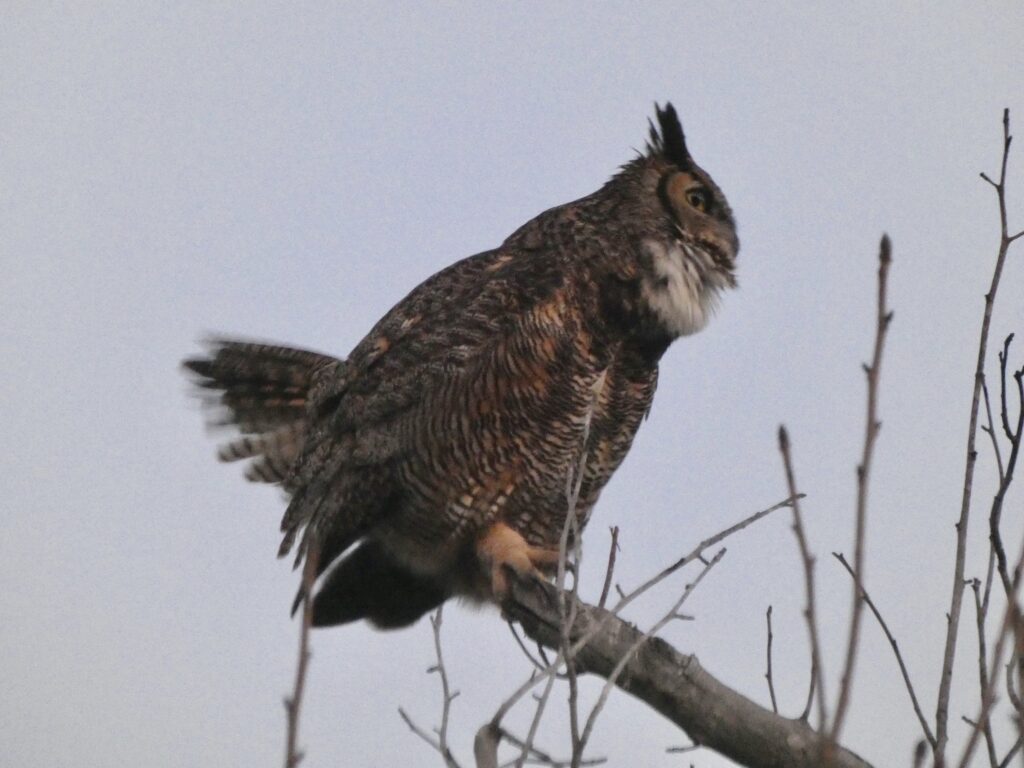
Great horned owl courtship is also underway. It involves what sounds like an oboe concert from the treetops, one composed perhaps by Philip Glass The distinctive chorus of “who“ punctuated by an unearthly range of whistles, screeches, and cackles.
This is also the start of nesting season for barn owls, screech owls and diurnal raptors, including red-tailed hawks. Many of these species seek the same type of nesting site, at the tops of tall trees, and competition can be fierce.
Unlike the larger raptors, barn owls, Western screech owls, and kestrels are cavity nesters who prefer a hollow tree or other enclosed space. Barn owls are known to nest in palm trees, and they also live up to their name, using man made structures for shelter.
Screech owls and kestrels are more selective, but all three species will use a nest box, if it’s the right size and placed in the right location.
Some songbirds are also already thinking about nest sites. Cavity nesters like Western bluebirds, the oak titmouse and Bewick’s wren are already scoping out prospective sites, but it’s not too late to install a nest box in the garden, to help with the avian housing crunch. Nest boxes are available in a variety of sizes and styles designed to accommodate all kinds of cavity nesters.
It’s important to make sure one chooses the right kind of box for the bird species one is trying to help. Here at TNT, we’ve had good luck with boxes designed for blue birds and screech owls, but our barn owl box ended up housing a bee hive instead of birds. Wild Wings LA is a good resource of nest boxes. https://www.wildwingsla.com. The Cornell Bird Lab offers advice for educators that is handy for anyone interested in nest boxes: https://www.birds.cornell.edu/k12/educators-guide-to-nest-boxes/
We can help our wild neighbors by slowing down on the road, never using rodenticides, finishing tree trimming and brush clearing projects by the end of January, and sealing up gaps or holes around the house to prevent unwanted tenants from moving in—it’s a lot easier and less traumatic to keep squirrels, rats, bats, skunks and other wildlife out than it is to remove them when they’ve moved in.
The Palisades Fire has temporarily eliminated a wide swath of nesting habitat. The neighborhoods around the fire zone may see an increase in birds and animals this spring, and nesting sites like hollow branches and dense brush may be in more demand than usual. The single most helpful thing we can all do is to be tolerant of our wild neighbors, and learn to coexist whenever possible.





